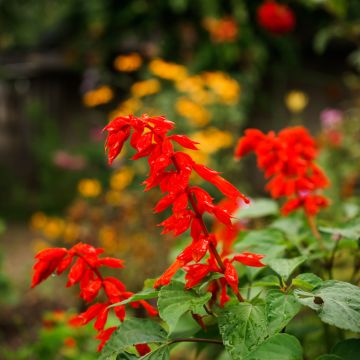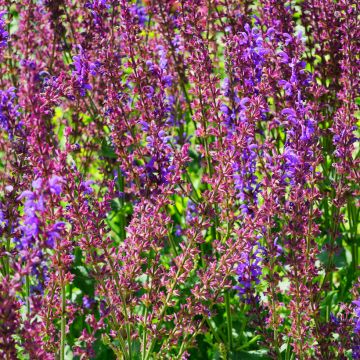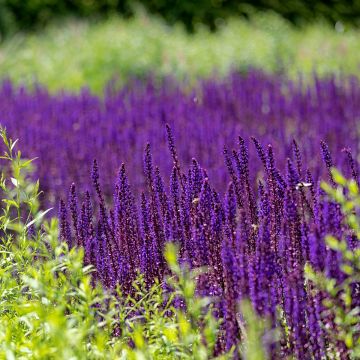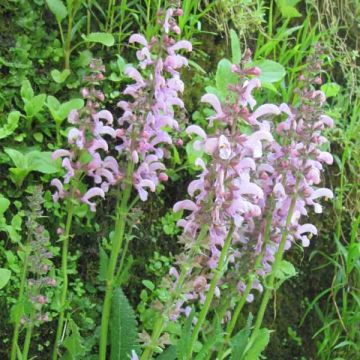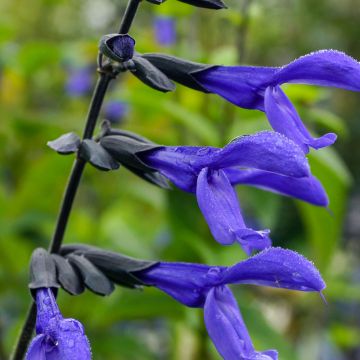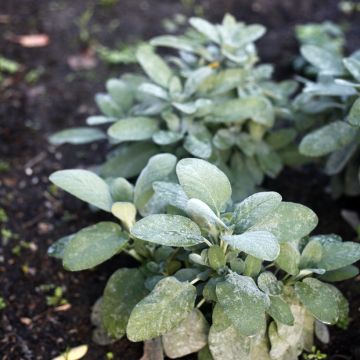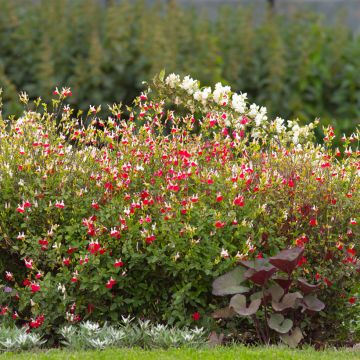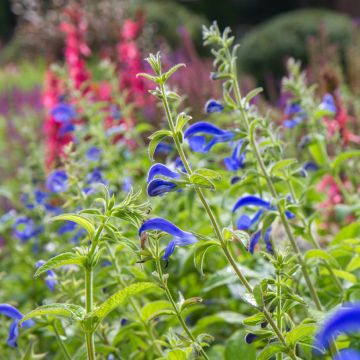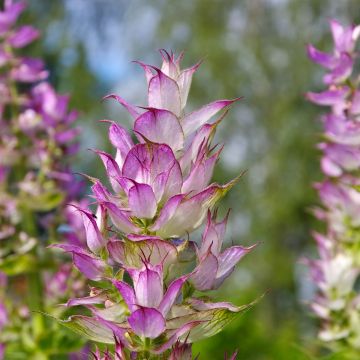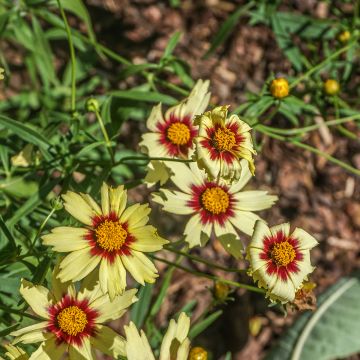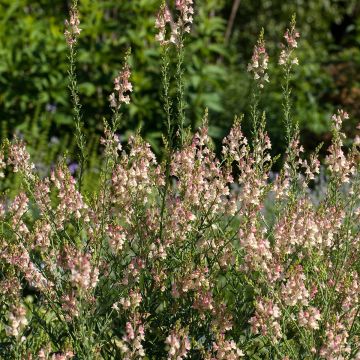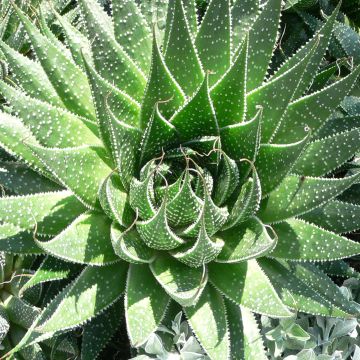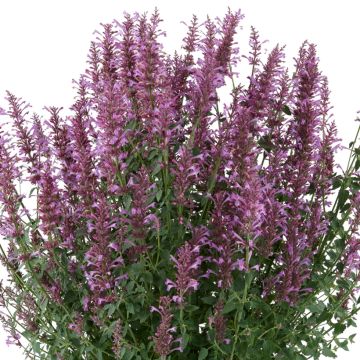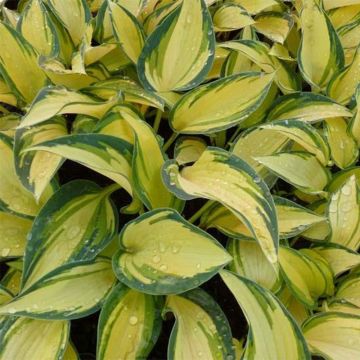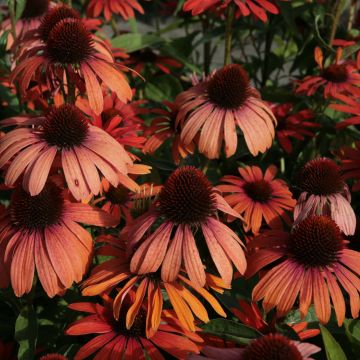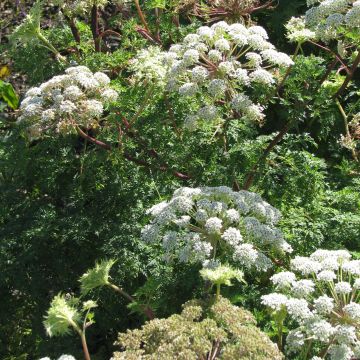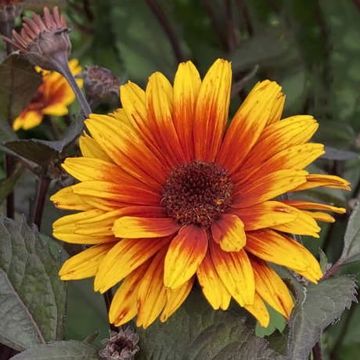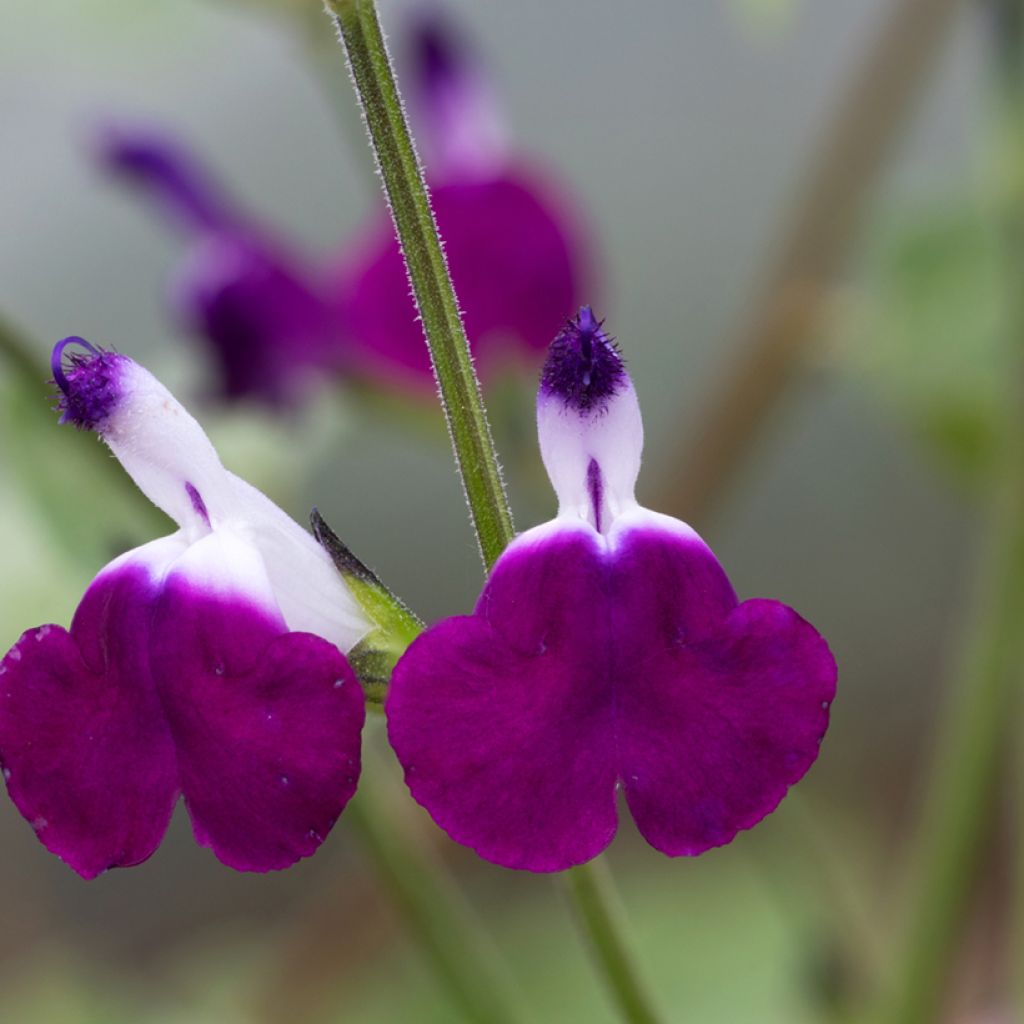

Salvia greggii Amethyst Lips
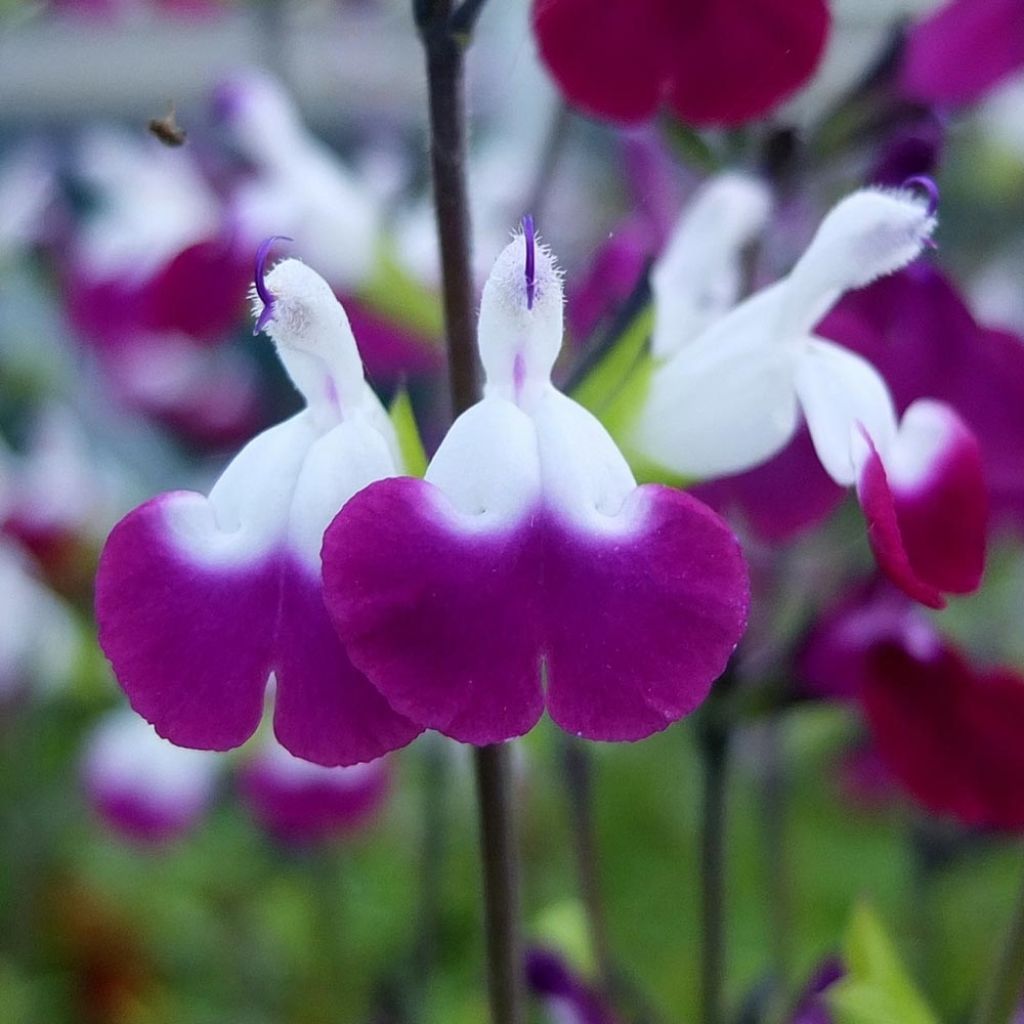

Salvia greggii Amethyst Lips
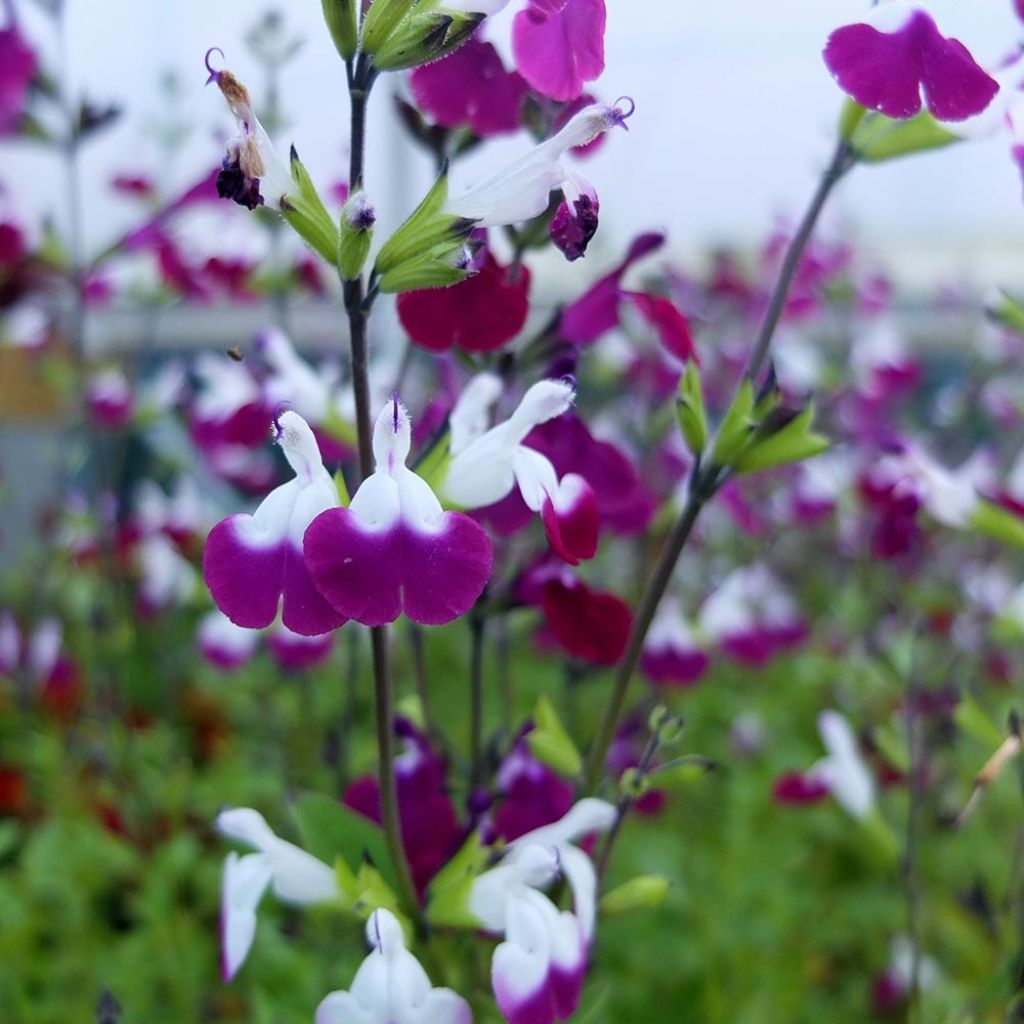

Salvia greggii Amethyst Lips
Salvia greggii Amethyst Lips
Salvia greggii Amethyst Lips
Autumn Sage, Cherry Sage, Gregg's Sage
This item cannot be shipped to the selected country
Delivery charge from €5.90
Delivery charge from €5.90
Delivery charge from €5.90
Delivery to Corse prohibited
More information
Schedule delivery date,
and select date in basket
This plant carries a 12 months recovery warranty
More information
We guarantee the quality of our plants for a full growing cycle, and will replace at our expense any plant that fails to recover under normal climatic and planting conditions.
From €5.90 for pickup delivery and €6.90 for home delivery
Express home delivery from €8.90.
From €5.90 for pickup delivery and €6.90 for home delivery
Express home delivery from €8.90.
From €5.90 for pickup delivery and €6.90 for home delivery
Express home delivery from €8.90.
Delivery to Corse prohibited: UE law prohibits the import of this plant from mainland France to Corse as part of the fight against Xylella fastidiosa. Please accept our sincere apologies.
More information

Does this plant fit my garden?
Set up your Plantfit profile →
Description
Salvia greggii 'Amethyst Lips' is a brand new variety of remarkable shrubby sage introduced at Plantarium in 2018. This pretty version with purple and white flower versions of the 'Hot Lips' sage has the same characteristics: it is an easy-to-grow and very floriferous perennial shrub, whose flowering changes colour depending on the ambient temperature, going from white to white and purple and then to pure purple. Looking like a bush covered with confetti for several months, it may be easier than 'Hot Lips' to match with many other garden plants. This small bush has a unique presence, in a flower bed as well as in a large pot on the terrace.
Salvia microphylla 'Amethyst Lips' is a brand new selection from a shrubby botanical species called Gregg's Sage. It belongs to the Lamiaceae or Labiate family. The mountains of the east, west and south of Mexico, as well as southern Arizona, are the birthplaces of this aromatic plant. It is a plant that prefers well-draining soil and can tolerate the presence of rocks and limestone in the soil. Its hardiness is around -10°C (14°F) in soil which is almost dry in winter.
'Amethyst Lips' is a well-branched woody perennial plant that has a bushy and spreading habit, a little wider than it is tall. This variety will reach about 70 cm (28in) in all directions at maturity. The nectar-rich flowering is particularly generous, spreading from May to October depending on the climate, slowing down in summer if the soil is dry. Its autumn flowering is remarkable and only stops when the cold puts an end to it. The small two-lipped flowers emerge from the foliage, grouped in spikes. They are barely more than 2 cm (1in) long and live for just one day, covering the ground with their petals in the evening, but will already be replaced the next morning. When the temperature is cool in spring, the flowers are mostly white. In summer, they are bi-coloured, white with purple-violet lips, sometimes entirely violet if it is very hot. In autumn, they are a deeper violet. The foliage is semi-evergreen in winter depending on the temperature. It is composed of small ovate leaves measuring 2 to 4 cm (1 to 2in) in length, with rounded teeth, dark green, thick and aromatic, a little sticky, releasing a strongly acidic essential oil with heat. This sage, known for its drought tolerance, will still require some watering in very dry climates in summer.
This sage is visible from afar and brings life to any flower bed or terrace for almost 6 months. It will accompany the spring blooms of rockroses, rosemary, garden irises, peonies... Its flowering goes well with all shades of mauve, red, pink, purple or blue. In summer, it will be sublime next to the silver foliage of cotton lavenders, Helichrysum italicum or shrubby wormwoods. But its association with autumn asters is fabulous: choose those that require little, like Aster laevis, Aster turbinellus or Aster amellus for example. Gauras, tall sedums (Sedum 'Matrona'), shrubby potentillas will create a charming tableau with it.
In Mexico, a tasty tea is prepared with the leaves of this sage, which is called 'mountain myrtle' there.
Report an error about the product description
Salvia greggii Amethyst Lips in pictures
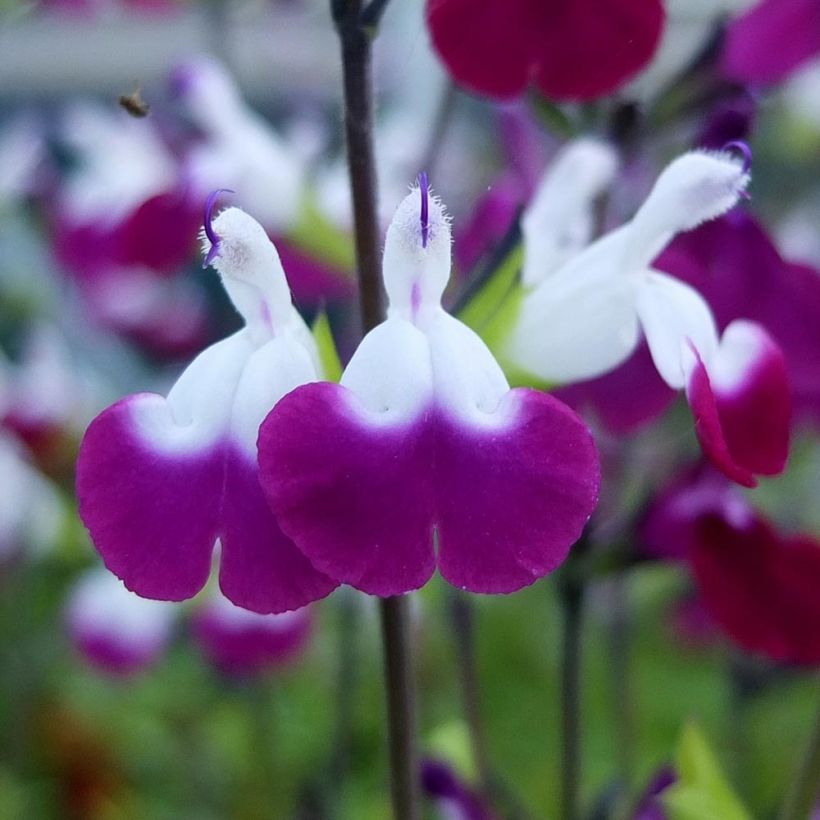

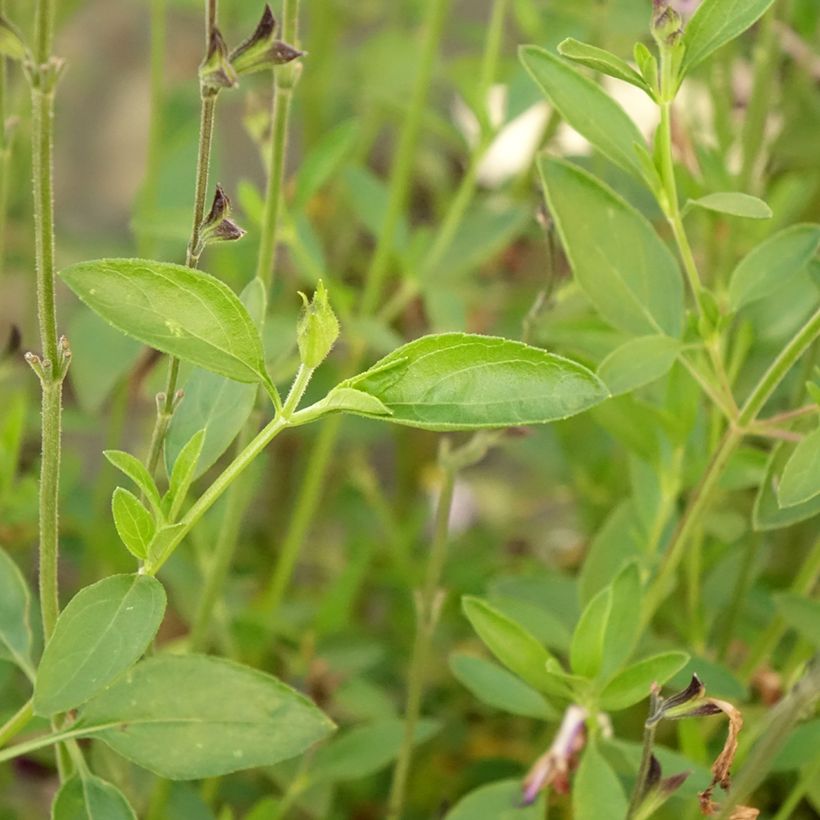

Flowering
Foliage
Plant habit
Botanical data
Salvia
greggii
Amethyst Lips
Lamiaceae
Autumn Sage, Cherry Sage, Gregg's Sage
Cultivar or hybrid
Other Salvia - Sage
Planting and care
Plant Salvia Amethyst Lips after spring frosts in a cold climate, in September-October in a warm climate, in light, ordinary, porous, rocky, even limestone soil, not too poor to support its flowering. This plant prefers very sunny situations, or partial shade in a warm climate. For abundant flowering, it requires regular watering in autumn and spring if the weather is very dry. In poor soil, incorporate a little well-rotted compost or leaf mold. Mulch it in winter, in the coldest regions, and protect it from the cold as much as possible. Install it in the warmest corner of the garden, in full sun against a south wall, on a rocky or sandy slope, in any substrate that does not retain moisture, which would be fatal to it in winter. Under these conditions, it can withstand short frosts of around -10/-12°C (14/10.4°F). It thrives when grown in a pot, which allows gardeners to store it in winter.
This sage has no specific enemies or diseases.
Planting period
Intended location
Care
-
, onOrder confirmed
Reply from on Promesse de fleurs
Summer flowering perennials
Haven't found what you were looking for?
Hardiness is the lowest winter temperature a plant can endure without suffering serious damage or even dying. However, hardiness is affected by location (a sheltered area, such as a patio), protection (winter cover) and soil type (hardiness is improved by well-drained soil).

Photo Sharing Terms & Conditions
In order to encourage gardeners to interact and share their experiences, Promesse de fleurs offers various media enabling content to be uploaded onto its Site - in particular via the ‘Photo sharing’ module.
The User agrees to refrain from:
- Posting any content that is illegal, prejudicial, insulting, racist, inciteful to hatred, revisionist, contrary to public decency, that infringes on privacy or on the privacy rights of third parties, in particular the publicity rights of persons and goods, intellectual property rights, or the right to privacy.
- Submitting content on behalf of a third party;
- Impersonate the identity of a third party and/or publish any personal information about a third party;
In general, the User undertakes to refrain from any unethical behaviour.
All Content (in particular text, comments, files, images, photos, videos, creative works, etc.), which may be subject to property or intellectual property rights, image or other private rights, shall remain the property of the User, subject to the limited rights granted by the terms of the licence granted by Promesse de fleurs as stated below. Users are at liberty to publish or not to publish such Content on the Site, notably via the ‘Photo Sharing’ facility, and accept that this Content shall be made public and freely accessible, notably on the Internet.
Users further acknowledge, undertake to have ,and guarantee that they hold all necessary rights and permissions to publish such material on the Site, in particular with regard to the legislation in force pertaining to any privacy, property, intellectual property, image, or contractual rights, or rights of any other nature. By publishing such Content on the Site, Users acknowledge accepting full liability as publishers of the Content within the meaning of the law, and grant Promesse de fleurs, free of charge, an inclusive, worldwide licence for the said Content for the entire duration of its publication, including all reproduction, representation, up/downloading, displaying, performing, transmission, and storage rights.
Users also grant permission for their name to be linked to the Content and accept that this link may not always be made available.
By engaging in posting material, Users consent to their Content becoming automatically accessible on the Internet, in particular on other sites and/or blogs and/or web pages of the Promesse de fleurs site, including in particular social pages and the Promesse de fleurs catalogue.
Users may secure the removal of entrusted content free of charge by issuing a simple request via our contact form.
The flowering period indicated on our website applies to countries and regions located in USDA zone 8 (France, the United Kingdom, Ireland, the Netherlands, etc.)
It will vary according to where you live:
- In zones 9 to 10 (Italy, Spain, Greece, etc.), flowering will occur about 2 to 4 weeks earlier.
- In zones 6 to 7 (Germany, Poland, Slovenia, and lower mountainous regions), flowering will be delayed by 2 to 3 weeks.
- In zone 5 (Central Europe, Scandinavia), blooming will be delayed by 3 to 5 weeks.
In temperate climates, pruning of spring-flowering shrubs (forsythia, spireas, etc.) should be done just after flowering.
Pruning of summer-flowering shrubs (Indian Lilac, Perovskia, etc.) can be done in winter or spring.
In cold regions as well as with frost-sensitive plants, avoid pruning too early when severe frosts may still occur.
The planting period indicated on our website applies to countries and regions located in USDA zone 8 (France, United Kingdom, Ireland, Netherlands).
It will vary according to where you live:
- In Mediterranean zones (Marseille, Madrid, Milan, etc.), autumn and winter are the best planting periods.
- In continental zones (Strasbourg, Munich, Vienna, etc.), delay planting by 2 to 3 weeks in spring and bring it forward by 2 to 4 weeks in autumn.
- In mountainous regions (the Alps, Pyrenees, Carpathians, etc.), it is best to plant in late spring (May-June) or late summer (August-September).
The harvesting period indicated on our website applies to countries and regions in USDA zone 8 (France, England, Ireland, the Netherlands).
In colder areas (Scandinavia, Poland, Austria...) fruit and vegetable harvests are likely to be delayed by 3-4 weeks.
In warmer areas (Italy, Spain, Greece, etc.), harvesting will probably take place earlier, depending on weather conditions.
The sowing periods indicated on our website apply to countries and regions within USDA Zone 8 (France, UK, Ireland, Netherlands).
In colder areas (Scandinavia, Poland, Austria...), delay any outdoor sowing by 3-4 weeks, or sow under glass.
In warmer climes (Italy, Spain, Greece, etc.), bring outdoor sowing forward by a few weeks.

































